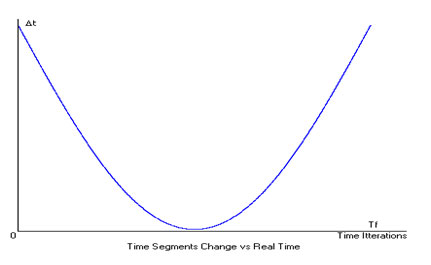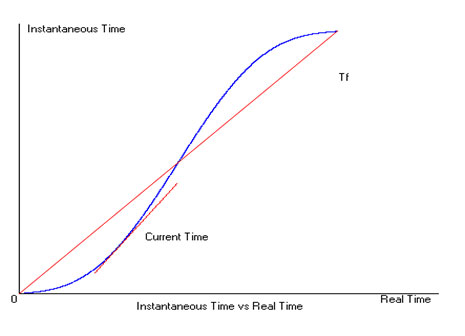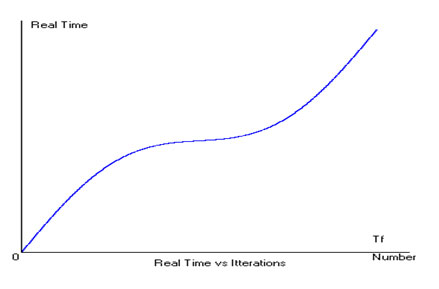Time
Time rate is the respite
for all physical changes that existence needs and or is
duration that changes are sensed or transferred. Change of anything or motion of anything only
could be done except change via Omegas configuration. Any change in configuration of Omegas
(angular change/movement) is called a command.












Fig.6- Change or rotation of Omega in any phase is called COMMAND
Each command transfer to happen needs a respite time and would be done within each time slice, or this action sinks time to be done (each Omega need some rotation to accept any changes, that means a Δt is needed) . Transferring command from each Omega to the next Omega is done with speed Sf. It should be considered that transferring a command takes more time if an Omega is bounded by other Omegas, since any change in each Omega has effect on surrounding Omegas, and or is under influence of other Omegas, then settling time for combined objects need more time. This is the reason for decrease of any wave speed or transfer speed in dense area.

Fig.7- Commands are transferred via Omegas.
Since most of transfers are done by massive collection of Omegas, to prevent philosophic discussions the maximum speed of Omegas is called THE COMMAND TRANSFER speed.
The Universal time or Real Time is sum of time slices Δt or quanta of time. Time slices are the duration needed for all the world items to be settled down all their changes, actually time is the sum of all periods of the world changes. At the beginning time slices or Δt were very large (compared to recent Δt which is Planck Time Constant ) but with the world expansion, Δt became smaller, and time run faster and faster till now which has the current time rate.
This should be considered that for a human being time rate always looks the same and human cannot sense its changes, but for sources with emitting energy their resonant frequencies will change by time. In fact, as is said time for any moving objects decreases by velocity with respect to light speed, but it is not time itself, but is Δt which increases, also Δt increases in vicinity of any massive object and would be very big near to Black Holes. (Time approximately stops at Black Holes)

Tr is the universal time or real time (as function of distance to origin), has its maximum value at the CENTER OF THE WORLD and always is zero at the HORIZON.
Assuming the Omegas created by time, distributing in the space are bounded by radius R and also the average value of distance between Omegas to be Δr(t) then the number of the world Omegas would be

Also it could be assumed the growth of the world has the following equation at time slice (i) .

This is a very rude approximation for number of Omegas created (K is number of Dims that previously is said to be 16). Since the strength of Dimensions was decreasing exponentially and also considering growth of the space, by time or by passing some iterations the rate of PAR was not exponentially anymore and will saturate to a determinant value. Also it is clear that par(0) =0. By these equation the Δt will be derived as

By assuming some other approximations such as rate of change of Omegas being proportional to radius R or Sin(t) and also changing iteration to time then we have

Or simply

Which Δt(1) has the largest value and Δt(Tf/2) has the minimum value.

Fig. 8- The time-rate (time slices) versus time iterations
After some time slices the number of Omegas would reach to its maximum value N , but population of Omegas at any distance (d) from the world center follows the above rule.
There should be some assumptions to determine approximated values for functions of R(t), Sf(t) and Δt(t). If we are at approximately quarter of the world life, that is 13.7 (Milliard years LOCALLY) in term of current rate of change of time, which is 50 Mil years, so the world life time in reality should be approximately 200 Milliard years. That means Tf=200 Mil years and with this assumption and also Sf=300000 Km/Sec (LOCALLY) some results could be derived Sfmax=424000 Km/Sec (current edge speed) that shows light speed will increase to this value (LOCALLY), and could be calculated universally to be 430000 Km/Sec also the world acceleration would be Aw=7.32 mm/Sec2 maximum, which is a huge number for the world. The world maximum radius also could be derived to be R. =9.35×1026 Km which is 90 Mil Light-years, with the current light speed. It would be discussed later that Sf also is a function of distance from the world center so Sfmax is much bigger.
Using t =Tf/4 (now) which Δt = Planck time constant (now) then Δt(Tf/4) = 2.204×10-44Sec.The first time slice Δt(1) could be calculated Δt =1. 675×10-15 Sec. Comparing Δt(1) value to the quarter-life time of the world, which is Planck time constant, clearly the first slice is a huge number with respect to current time slice.
Unfortunately there is no way to prove the non linearity of time, except observing stars which are seen at distances more the 13.7 Mil light years, or approval of slower light speed at some Mil years before or some physical evidence or tests in future. These days all physical phenomena are calculated using Planck constants, but important facts should be considered that, most physical problems could not be solved. Imaginary time is what human has used to it. It is quantized and is assumed to be linear. The real universal age of the world is 200 Mils but it will be measured (less than 100 Mil) by recent scales. Also maximum number of Omegas could be calculated to be Par. = 2.944×10193 which means the world is finite. Considering suggestion of scientists for the world total mass Mw = 17.1×1060 Kg will result 1Kg=1.721×10132 Omegas, which shows how dense are Omegas gathered to make materials. With the assumptions made, real time is at quarter of Tf so it is clear that only 35% of Omegas are changed to mass and the remaining Omegas would be changed to materials in future but are distributed uniformly in space. (The real Dark material is these free Omegas)

Fig. 9- Imaginary time versus Real time
Tangent to the curve at ¼ of the world life time give speed of time-rate of change, which have quantized value of Planck time constant and obviously is much faster than the average time-rate and also it has the value of real time quanta which is Planck time constant.

Fig. 10- Real time versus Imaginary time
Using imaginary time, number of time slices passed could be calculated.
M=13.7 Mil Years /Planck Time constant = 8×1063 iterations
Integrating Δt with this number will give the real time that could be approximately 58 Mil years. This is the reason that many stars or galaxies are seen in distances more than 13.7 Mil Years.